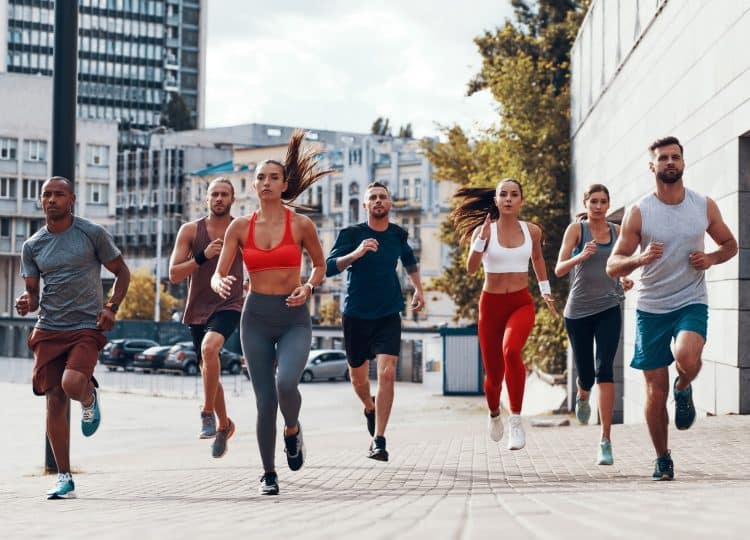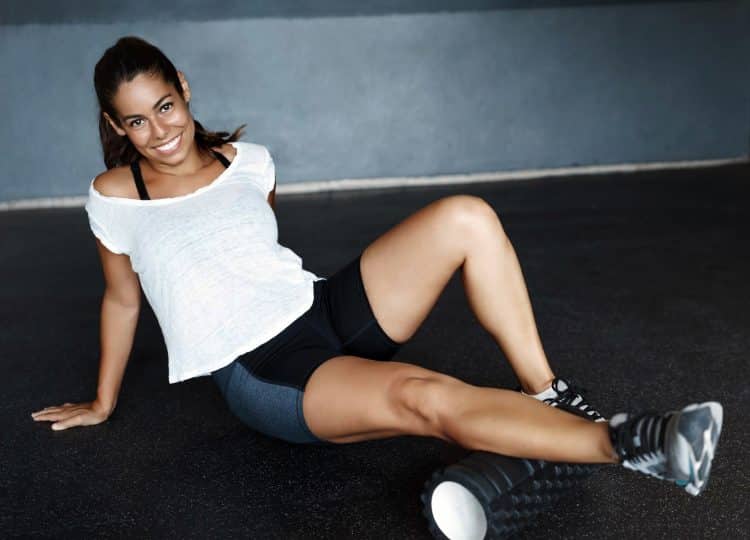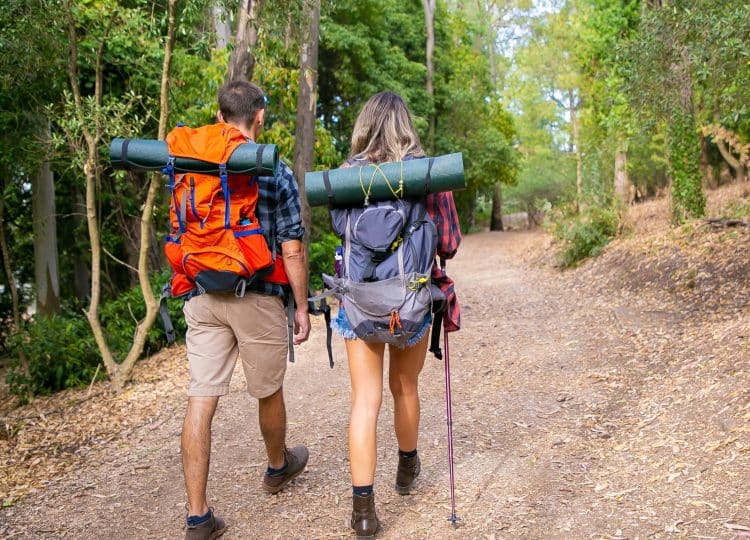We often think the harder we push, the more gains we make. In reality, the more we recover, the more progress we make. Hard training is great, but simply pushing your body to the limit doesn’t guarantee results. Following a methodical approach is your best bet toward achieving your training objectives.
This is where active recovery comes in. It’s often the most underrated aspect of fitness. It’s a step back from intense training and a step above complete rest. With active rest, you’re not grinding your gears, but you’re also not sitting on the couch.
Active recovery involves engaging in low-intensity exercises or activities that promote blood flow, tissue repair, and psychological relaxation (1). Conversely, conventional rest days involve sedentary behaviors that can lead to muscle stiffness and reduced circulation.
Active recovery involves physical activity but without the demands of a typical workout. It’s a gentle workout if you will. Make no mistake, these gentle workouts can go a long way.
What is Active Recovery?
Active recovery can take various forms, including light jogging, swimming, yoga, mobility exercises, and even walking or cycling. You can even dance to Taylor Swift in your kitchen to check off your active recovery session. The key is maintaining a significantly lower training intensity than your regular workouts while still engaging the body and mind. It still requires intentional execution.
Level Up Your Fitness: Join our 💪 strong community in Fitness Volt Newsletter. Get daily inspiration, expert-backed workouts, nutrition tips, the latest in strength sports, and the support you need to reach your goals. Subscribe for free!
Active recovery has many benefits, including:
- Improved Circulation: Light physical activity during recovery days promotes blood flow and nutrient delivery. It’s a crucial part of the recovery process.
- Waste Removal: Thanks to the improved circulation, your body disposes of metabolic waste products from the inclusion of active recovery. In other words, you will feel less fatigued.
- Enhanced Flexibility and Range of Motion: Activities like yoga can help maintain and even improve flexibility and mobility. This is incredibly important because tight muscles can cause us to lose range of motion.
- Psychological Benefits: Active recovery doesn’t just benefit the body; it also nurtures the mind. Activities like light walking or stretching have been shown to provide stress-relieving benefits. (2)
- Injury Prevention: Regular active recovery can prevent overuse injuries. Especially if you vary your active recovery, it will allow your tissues to move and adapt in ways it’s not typically used to, making you resilient for your intense training.
- Preventing a Sedentary Lifestyle: Active recovery encourages you to do something daily. By placing active recovery workouts between your traditional training, you end up moving your body each day, preventing a sedentary lifestyle.
Things To Consider with Active Recovery
Here are a few caveats about active recovery:
- Listen To Your Body: Active recovery is the ideal form of recovery, but there might be times when your body is too beat up. On days like these, it’s best to take a complete rest day.
- Plan Active Rest Days: Sometimes, people view active recovery as an afterthought. It should be an intentional part of your schedule, similar to your intense workouts.
- Variety: Explore different forms of active recovery to keep things exciting and engage various muscle groups. While you should be intentional with active recovery, you can switch it up based on your preference. This could include activities like swimming one day and cycling later in the week.
- Stay Hydrated and Nourished: Proper hydration and nutrition play a crucial role in recovery. Ensure you’re consuming the necessary nutrients for optimal recovery.
- Prioritize Sleep: You can have the best training program with a consistent active recovery routine, but it means nothing if your sleep schedule is inconsistent. Aim for quality sleep to allow your body time to heal and recharge.
Active Recovery Tools
Active recovery schedules are flexible, and there are not many strict parameters surrounding them. Many styles and versions have similar benefits. Going for a walk after your workout is technically active recovery.
It can be a few minutes or even a half hour. Furthermore, many people will implement active recovery on their non-training days (3).
Resistance Bands
Resistance bands are a great low-impact tool to pump blood on active recovery days and stimulate the muscle while sparing stress from your joints and connective tissues. They’re also convenient and can be done at home or during your lunch break.
Try this circuit of five exercises on your active recovery day:
| Exercises | Sets | Reps | Rest |
| Squats with Resistance Band | 2–3 | 10-15 | 30-60 seconds |
| Banded Push-Up | 2–3 | 10-15 | 30-60 seconds |
| Banded Lat Pulldown | 2–3 | 10-15 | 30-60 seconds |
| Glute Bridge with Resistance Band | 2–3 | 10-15 | 30-60 seconds |
| Banded Shoulder Press | 2–3 | 10-15 | 30-60 seconds |
Squats with Resistance Band
- Place the resistance band just above your knees.
- Stand with your feet shoulder-width apart.
- Engage your core, push your hips back, and bend your knees to lower into a squat.
- Keep tension on the band throughout the movement.
- Push through your heels to return to the starting position.
Banded Push-Up
- Wrap the resistance band around your upper back and hold the ends in your hands.
- Assume a push-up position with your hands on the ground, slightly wider than shoulder-width apart.
- Lower to the floor by bending your elbows.
- Push back up to the starting position.
Banded Lat Pulldown
- Attach the resistance band to a stable anchor point overhead, like a door.
- Kneel and hold the band with both hands, arms extended.
- Pull the band down towards your chest, squeezing your shoulder blades together and flexing your elbows.
- Slowly return to the starting position.
Glute Bridge with Resistance Band
- Place the resistance band just above your knees.
- Lie on your back with your knees bent and feet flat on the floor.
- Push through your heels, lift your hips off the ground, and squeeze your glutes at the top.
- Lower your hips to the floor.
Banded Shoulder Press
- Stand on the resistance band with both feet and hold the band at shoulder height.
- Press the band overhead while extending your arms fully.
- Slowly lower the band back to shoulder height.
Stretching
Stretching is a great active recovery tool to relax your muscles and mind (4). It also allows you to work on your mobility. This is especially useful when dealing with delayed onset muscle soreness (DOMS) or waking up with random muscle stiffness.
Try this circuit of five stretches for tight muscles. These can be done post-workout or on a different day from your strength training.
| Exercises | Time |
| Hamstring Stretch | 30-60 seconds (Each side) |
| Quad Stretch | 30-60 seconds (Each side) |
| Chest Opener Stretch | 30-60 seconds (Each side) |
| Child’s Pose Stretch | 30-60 seconds (Each side) |
| Triceps Stretch | 30-60 seconds (Each side) |
Hamstring Stretch
- Sit on the floor with one leg extended straight out in front of you.
- Bend the other leg at the knee, placing the sole of your foot against the inner thigh of your extended leg.
- Keeping your back straight, gently reach forward with your hands towards your extended foot.
- Stop when you feel a stretch in your hamstring.
- Hold the stretch for 30-60 seconds, breathing deeply.
Quad Stretch
- Stand upright with your feet hip-width apart.
- Bend one knee and bring your foot towards your glutes, holding onto your ankle or foot with the corresponding hand.
- Keep your knees together and your standing leg straight.
- Gently push your hips forward to intensify the stretch in the front of your thigh.
- Hold the stretch for 30-60 seconds.
Chest Opener Stretch
- Stand tall with your feet hip-width apart in front of a standard doorway.
- Place both elbows/forearms on each side of the door frame.
- Gently push your body forward, feeling a stretch across your chest and the front of your shoulders.
- Hold the stretch for 30-60 seconds.
Child’s Pose Stretch
- Start on your hands and knees in a tabletop position.
- Slowly sit back onto your heels, extending your arms forward and lowering your chest towards the floor.
- Let your forehead rest on the ground, and your arms stretch out in front of you.
- Breathe deeply and relax into the stretch, feeling your lower back and hips release tension.
- Hold the stretch for 30-60 seconds.
Triceps Stretch
- Stand upright.
- Raise one arm overhead, bending it at the elbow so your hand drops behind your head.
- With your opposite hand, gently hold your bent elbow and apply a slight pressure to deepen the stretch.
- Feel the stretch along the back of your upper arm.
- Hold the stretch for 30-60 seconds.
Foam Rolling
Foam rolling, also known as myofascial release, is another excellent active recovery tool as it promotes relaxation and flexibility (5). With foam rolling, you’re essentially giving yourself a massage, and some of those painful knots you’ve developed over the years through weight training will loosen up and feel much better after a few foam rolling sessions.
Foam rolling is best done when you’re warm and have blood flowing. A few jumping jacks or exercises from this article can help with that. Then, you want to be intentional with which areas you foam roll. You must prioritize the tight muscle groups. You can also foam roll your entire body, as there is no harm in doing so.
Ensure you foam roll a muscle slowly. Spastic movement is ineffective and will make you look like a demon-possessed fish out of water. So move with control. Hold that pressure and breathe deeply if an area is painful or tight. You need to lean into the pain to a degree. It doesn’t have to be excruciating, but foam rolling can feel intense, especially for beginners.
Work on the muscle for the desired time or until it feels more mobile. Avoid foam-rolling bones and joints. Here are common areas to foam roll.
- Calves: Roll from just above the ankle to below the knee.
- Quads: Roll from the hip to just above the knee.
- Hamstrings: Roll from below the glutes to above the knee.
- Glutes: Sit on the foam roller and roll over each buttock.
- Back: Gently roll your upper and middle back. Avoid the lower back and spine.
- IT Band: Roll from the hip to the knee on the side of your thigh.
- Shoulders: Roll along the front, side, and rear shoulder.
- Chest: Lay your pec on the roller and roll across each pec. This may be uncomfortable for women, but most people can still easily roll the outside of their pec.
Walking
Going for a walk is one of the most overlooked forms of active recovery. In fact, it’s crucial for your overall health. It also requires no guesswork.
Level Up Your Fitness: Join our 💪 strong community in Fitness Volt Newsletter. Get daily inspiration, expert-backed workouts, nutrition tips, the latest in strength sports, and the support you need to reach your goals. Subscribe for free!
It’s easy to plan, you can do it anywhere, and it doesn’t require any equipment. Anyone can do it regardless of their training experience. So, if your step count has been low, this is your sign to get your steps in.
Here are some ideas to spice up your walks:
- Treadmill desk: These are great to keep you moving while working.
- Walking pad: Many of my clients use these while watching TV, playing video games, or scrolling on their phones.
- Weighted vest: This is a great way to burn extra calories per step and make you look hardcore like David Goggins.
Recreational Activity
What better way to incorporate active recovery than doing the activities you love? Playing a game of pickleball, hitting some pins at the bowling alley, or having a dance party are all great forms of active recovery.
Active recovery doesn’t need to be monotonous to be effective. If you struggle to get active recovery done, it helps to invite friends out for things like golf, basketball, hikes, etc., but don’t be weird about it and call it active recovery while inviting them.
Active Recovery Schedule
Resistance training is a great way to build muscle and strength. However, it’s equally important to mix in lower-intensity active recovery. In fact, this balance allows your body to keep moving and do something active each day.
Here are some examples of how it would look across your week, so plan accordingly.
3 Days of Strength Training
- Monday: Strength training
- Tuesday: Active recovery
- Wednesday: Strength training
- Thursday: Active recovery
- Friday: Strength training
- Saturday: Active recovery
- Sunday: Active recovery
4 Days of Strength Training
- Monday: Strength training
- Tuesday: Strength training
- Wednesday: Active recovery
- Thursday: Strength training
- Friday: Strength training
- Saturday: Active recovery
- Sunday: Active recovery
5 Days of Strength Training
- Monday: Strength training
- Tuesday: Strength training
- Wednesday: Active recovery
- Thursday: Strength training
- Friday: Strength training
- Saturday: Active recovery
- Sunday: Strength training
Intra-Workout vs. Post-Workout Active Recovery
If you include active recovery on the same day as your intense training, you can include it within your workout between sets (intra-workout) or after your workout is completed (post-workout). You could technically do both, but for simplicity’s sake, here are the main differences between the two.
Primarily, it comes down to the trade-off between optimality and convenience. It is likely more optimal to include active recovery after your workout because it is the least intense part and can still be done post-workout, allowing you to preserve your energy for maximum training performance.
However, people are busy, and sometimes, including some active recovery between sets is easier. This can be an excellent way to stay warm and work on your cardiovascular system and flexibility. The drawback is that this will likely hinder your actual training performance. Some research finds that stretching between sets can compromise strength training performance (6).
Justifying any activity between sets during an intense strength training session is difficult because you’re spent from pushing hard. Think of how you typically feel after a hard set of deadlifts or squats. Even a walk will be daunting.
So, while you can have some active recovery between sets, like a light walk to the water fountain or stretch, it’s best to save active recovery for after your workout or on its own separate day where you can give it more time and attention.
Choosing the Right Active Recovery For You
Choosing the right active recovery for you comes down to your goals. Each movement you do will cause adaptation of some sort. Some of these adaptations overlap, giving us flexibility in deciding what to choose. However, some adaptations are specific to certain modalities.
For example, if you need to improve your flexibility, walking will not be as effective as stretching or yoga.
So, it’s essential to see if you need a specific active recovery tool in the first place. Many people, though, can reap most of the benefits related to active recovery by doing anything. You can get your blood pumping and promote recovery with a wide variety of activities.
For the best results, choose something you enjoy, and feel free to switch it up each week. This keeps you consistent in practice, which is the secret sauce behind active recovery’s effectiveness.
My only hard recommendation is to be intentional about it ahead of time. Let’s say you suddenly want to hop in the pool for active recovery after a hard workout. Without planning ahead of time, you won’t have your swimsuit and goggles ready. It’s the same if you need to sign up for a yoga class beforehand or book a pickleball court. Intentionality is key to ensuring that active recovery happens.
The Subtle Necessity for Active Recovery
Active recovery will not get you jacked or take you to the Olympics, but it has endless benefits that support your more demanding training. It promotes nutrient delivery and blood flow to your muscles and keeps you active on non-training days.
Active recovery can be versatile, and the endless options include stretching, foam rolling, walking, or even dancing. So if you’ve been slacking on your off days, this is your nudge to incorporate active recovery into your routine.
References
- Nakamura K, Kodama T, Mukaino Y. Effects of active individual muscle stretching on muscle function. Journal of physical therapy science. March 2014. Accessed September 4, 2023.
- Wiewelhove T, Döweling A, Schneider C, et al. A meta-analysis of the effects of foam rolling on performance and recovery. Frontiers in physiology. April 9, 2019. Accessed September 4, 2023.
- Page P. Current concepts in muscle stretching for exercise and rehabilitation. International journal of sports physical therapy. February 2012. Accessed September 4, 2023.
- Yamagishi T, Babraj J. Active recovery induces greater endurance adaptations when performing sprint interval training. Journal of strength and conditioning research. April 2019. Accessed September 4, 2023.
- Zhu Z, Chen H, Ma J, He Y, Chen J, Sun J. Exploring the relationship between walking and emotional health in China. International journal of environmental research and public health. November 27, 2020. Accessed September 4, 2023.
- Dupuy O, Douzi W, Theurot D, Bosquet L, Dugué B. An evidence-based approach for choosing post-exercise recovery techniques to reduce markers of muscle damage, soreness, fatigue, and inflammation: A systematic review with meta-analysis. Frontiers in physiology. April 26, 2018. Accessed September 4, 2023.











